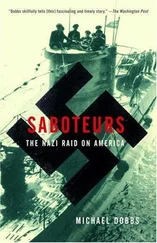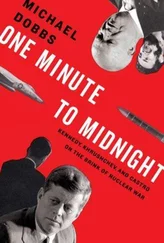Years later the people of Pripyat would have reason to curse the lack of information. Thousands died because of mysterious illnesses. The health of tens of thousands of others was permanently ruined. Leukemia rates soared. “If we had known what had happened, of course we would have remained indoors and taken precautions. God knows how much radiation we might have been spared,” said Nadezhda Spachenko, a Chernobyl engineer, whose children soon began to suffer chronic headaches, nosebleeds, swollen thyroid glands, and general fatigue. 113
In the best Soviet tradition, the investigation of the Chernobyl disaster was entrusted to the very people who were largely responsible for the tragedy. The first government commission arrived on the scene eighteen hours after the explosion. It was headed by Deputy Prime Minister Boris Shcherbina and included the designers of the failed reactor. Shcherbina was a leader of the old school, a little Napoleon who could instill terror in his subordinates with a harsh remark or withering glance. He had served as minister of oil and gas, a job that involved relentless cracking of the whip to ensure the fulfillment of planned targets. Promoted to the post of deputy prime minister in charge of the entire energy sector, he had attempted to apply similar methods to the building of nuclear power stations, a policy that had resulted in a sharp fall in safety standards. His handling of the emergency was summed up by a phrase that he used soon after his arrival in Pripyat: “Panic is worse than radiation.” 114
The evacuation of Pripyat finally got under way at 1:30 p.m. on April 27, thirty-six hours after the disaster. Believing they would be allowed to return in a few days, after the emergency was over, the residents left most of their belongings behind. Within a couple of hours a city of forty-eight thousand people had been turned into a ghost town. Pets had to be left behind because their hair was dangerously radioactive. For a few days packs of sick and hungry dogs roamed the streets, turning increasingly ferocious as it became clear that their masters would never return. Eventually they were rounded up and shot. In later years Pripyat became an eerie testimonial to the early Gorbachev era, with faded propaganda banners hailing the forthcoming May Day holiday.
It was not until the radioactive cloud reached Sweden on April 28, two and a half days after the explosion, that the rest of the world found out that a major nuclear disaster had occurred. An emergency Politburo session was convened in Moscow to consider how to respond to inquiries from Western governments and media organizations. After some debate, the Politburo decided to provide as little information as possible. That evening, a television announcer read a terse four-line communiqué from the Soviet government: “An accident has taken place at the Chernobyl power station, and one of the reactors was damaged. Measures are being taken to eliminate the consequences of the accident. Those affected by it are being given assistance. A government commission has been set up.” Censors instructed Soviet editors to refrain from publishing anything about Chernobyl other than the official government communiqué.
Deprived of information, Soviets living in the immediate vicinity of Chernobyl exposed themselves to further danger, at a time when people thousands of miles away, in Western Europe, were drinking powdered milk and scrubbing vegetables. On Tuesday, April 29, U.S. intelligence analysts were stunned to see satellite pictures of an open-air soccer game taking place less than a mile from the smoldering reactor. A barge was sailing peacefully down the Pripyat River as if nothing had happened. 115The second stage of the evacuation, affecting eighty-five thousand people living within an eighteen-mile radius of the power plant, did not begin until May 5, more than a week after the explosion. Apart from a few privileged officials, scarcely anyone in the zone received potassium iodide pills that might have afforded some protection against fast-decaying radioisotopes, such as iodine 131.
By insisting on secrecy, the government commission exposed many more people than necessary to high doses of radiation. Hundreds of thousands of “liquidators”—mainly young people of child-bearing age—were ordered to take part in the cleanup effort. Many evacuees ended up in places that were only a little less dangerous than those they had left. Shcherbina ignored expert advice and ordered a new city, Slavutich, to be built on contaminated ground, to house Chernobyl workers and their families. In order to reduce the numbers of people requiring medical treatment, the government secretly approved a tenfold increase in “safe” radiation levels two weeks after the accident. For three years meat and milk from the contaminated region were mixed with clean meat and milk from other regions and sold all over the country. 116
Chernobyl was a symbol of the failure of the command-and-administer system. But in an ironic way, it was also an instrument of retribution against the system and its hitherto untouchable representatives. Most of the senior officials involved in the Chernobyl cleanup understood very little about radiation or nuclear physics. Through a combination of ignorance and bravado, they took needless risks. One deputy minister received a fatal dose of radiation in a top Moscow clinic after being assigned a bed previously used by a Chernobyl firefighter. 117A later investigation showed that the nursing staff had failed to change the bed linen, so patients were contaminating one another.
Shcherbina himself died under mysterious circumstances in August 1990, at the age of seventy, after what the Soviet press described as “a serious illness.” He had exposed himself to needless risks by eating contaminated food and flying over the reactor without protective clothing, but it was unclear whether his death was caused by radiation. In 1988 he had issued a secret decree forbidding doctors from citing radiation as a cause of death or illness. 118
THE SOVIET UNION’S most eminent nuclear scientists sat at little desks in front of Mikhail Gorbachev, like disobedient schoolchildren summoned to explain themselves before the headmaster. A portrait of Lenin gazed down severely from the walls of the Kremlin conference hall. Politburo members and ministers shifted uneasily in their chairs, uncertain who would be the next target of the general secretary’s wrath.
Under Brezhnev, Politburo meetings had been pro forma affairs, often lasting little more than twenty or thirty minutes. By long-established ritual, they took place every Thursday, on the third floor of the government building in the Kremlin, beginning on the stroke of 11:00 a.m. Many crucial decisions, such as the invasion of Afghanistan, were made by a handful of Brezhnev cronies and not even discussed by the full Politburo. After Gorbachev came to power, there was a complete change of routine. Politburo meetings turned into marathon brainstorming sessions that frequently lasted for eight or ten hours. The new gensek liked to include as many people as possible in the decision-making process. At times of crisis seventy or eighty people might crowd into the gloomy Politburo conference hall, to be subjected to long harangues by Gorbachev. 119
“For thirty years, you told us that everything was perfectly safe,” the Soviet leader fumed, addressing the nuclear barons. “You assumed we would look up to you as gods. That’s the reason why all this happened, why it ended in disaster. There was nobody controlling the ministries and scientific centers. And for the moment, I can see no signs that you have drawn the necessary conclusions. In fact, it seems that you are attempting to cover everything up.” 120
Читать дальше












